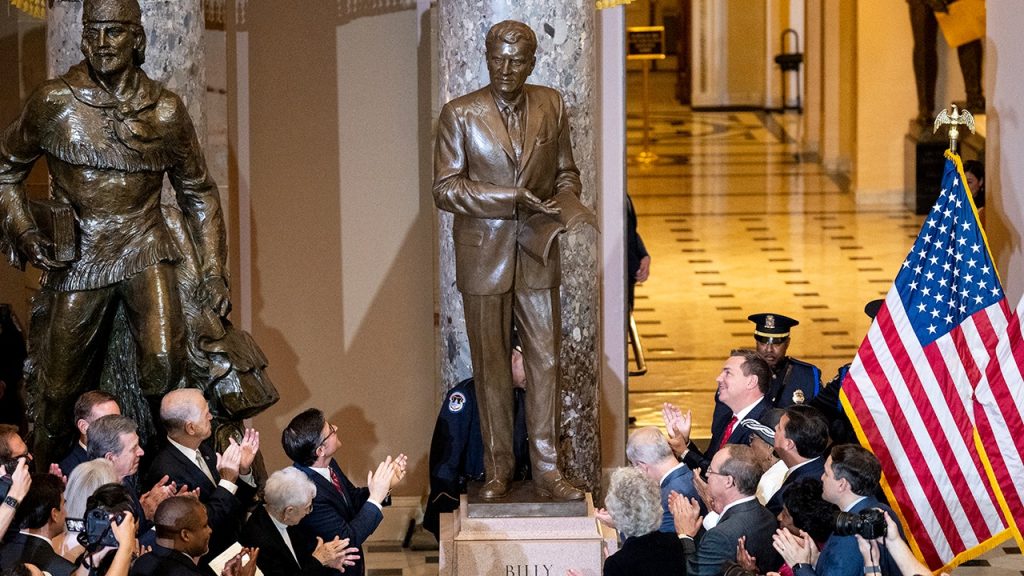A recent experience of a reporter covering Congress shines a light on the behind-the-scenes work that goes into preparing and unveiling statues at the U.S. Capitol. A seven-foot bronze statue of renowned preacher Billy Graham was being readied for placement in Statuary Hall, where visitors to the Capitol would be able to admire it. Graham’s statue replaced that of North Carolina Governor Charles Aycock in the collection, with each state having two statues on display. The process of unveiling and meticulously placing the statue involved workers and officials, who wanted the statue to be situated near the House chamber for maximum visibility to lawmakers and visitors alike.
However, after the initial unveiling ceremony, the reporter noticed that the statue had been moved from its prominent spot to a less visible location in the Crypt of the Capitol. This shift was unexpected and disappointing, as lawmakers and visitors would no longer pass by Graham’s statue on their way to the House chamber. The Capitol’s collection of statues has seen numerous changes in recent years, with new additions being introduced and older statues being swapped out. The Capitol Visitor’s Center will soon welcome a statue of musician Johnny Cash, becoming the first musician to be included in the collection.
The temporary relocation of Billy Graham’s statue to a less frequented area of the Capitol raises questions about the significance and visibility of these statues. While the statues serve as tributes to historical figures and prominent personalities, their positioning within the Capitol can determine the extent of their impact. As statues are moved and replaced over time, the collection continues to evolve, reflecting changing perspectives and priorities. The dedication of new statues, such as civil rights leader Daisy Bates and Johnny Cash, adds diversity and representation to the Capitol collection, highlighting different aspects of American history and culture.
The dedication and unveiling of statues at the U.S. Capitol involve intricate planning and coordination, with the aim of honoring notable individuals and promoting historical awareness. The presence of statues like Billy Graham’s and upcoming additions such as Johnny Cash’s underscores the Capitol’s role as a hub of cultural and historical significance. Visitors to the Capitol will have the opportunity to learn about and appreciate the contributions of these figures, as they are commemorated through the artistry and symbolism of their statues. The evolving nature of the Capitol’s statue collection reflects ongoing efforts to showcase a diverse array of figures who have shaped the nation’s history and identity.


